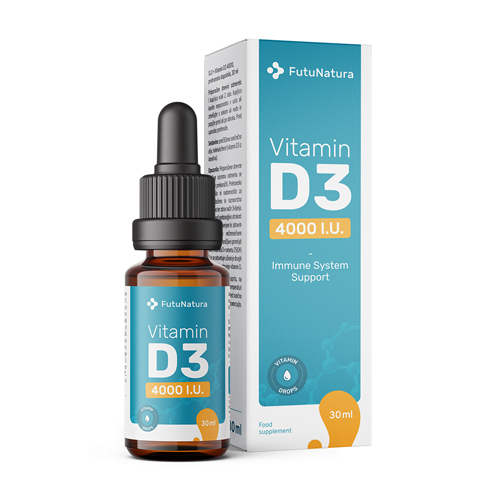Covid-19 Vitamin D
- Ustvarjalec teme AndY1
- Začetni datum
Uporabljate neposodobljen brskalnik. Ta ali druga spletna stran morda ne bo prikazana pravilno.
Posodobite brskalnik ali uporabite alternativni brskalnik.
Posodobite brskalnik ali uporabite alternativni brskalnik.

Domača lekarna: D vitamin
Če je to res, potem tablete pozimi.
Ni napaka, kljub temu da je zaradi Covida umrlo dodatno 100+ ljudi(1%smrti), jih je letos umrlo 0,8% manj.Na veliko se piše, da je zaradi posvečanja koroni umrlo en kup ljudi od drugih bolezni, ker zdravstvo ni funkcioniralo na polno. Ne vem, če že obstaja kaka statistika na nivoju države, ampak naš lokalni pogrebni zavod je med resnimi koronskimi ukrepi beležil kar konkreten "minus" pri umrlih običajno v tem obdobju. Nekako ljudje niso umirali. Kakšna prometna nesreča manj, kak tvegan poseg v bolnici manj, manj okužb z drugimi boleznimi. Povsem mogoče gre sicer samo za "napako" zaradi premajhnega vzorca prebivalstva, ki ga pokrivajo.
Torej...
Rojeni in umrli, Slovenija, januar - julij 2020
Ok, ne bomo o tem tukaj, v te temi.Ni napaka, kljub temu da je zaradi Covida umrlo dodatno 100+ ljudi(1%smrti), jih je letos umrlo 0,8% manj.
Torej...
Rojeni in umrli, Slovenija, januar - julij 2020
www.stat.si
Ali je mogoč "overdose" vitamina D? Povzroči "overdose" zdravstvene probleme?
Je mogoc, in ni povsem nedolzen. Mlajsi kot je clovek bolj je overdose opazen. Problem je v visku prostokrozecega kalcija ki dolgorocno unicuje mikroozilje, predvsem ledvic in mozgan. Od vecjih "prisilnih" doz jemanja vitaminaD pri zdravih in ljudeh z normalnimi zalogami ni do danes potrjenih nobenih koristi.
Kar ni nič narobe. Težave so lahko od 60000 IU dnevno naprej.Dr Fauci, upam, da veste, kdo to je, jemlje 6000 IU dozo Vitamina D dnevno.
Priporočila Linus Pauling instituta, ki se predvsem bavi s preučevanjem vitaminov, so naslednja:Torej, koliko IU je potrebno na dan, da si ne skodujes? 1000?
Vir:Toxicity
Vitamin D toxicity (hypervitaminosis D) has not been observed to result from sun exposure. The reason is that excessive sunlight exposure generates a number of biologically inert photoproducts from 7-dehydrocholesterol and cholecalciferol (3). Vitamin D toxicity induces abnormally high serum calcium concentration (hypercalcemia), which could result in bone loss, kidney stones, and calcification of organs like the heart and kidneys if untreated over a long period of time. Hypercalcemia has been observed following daily doses of greater than 50,000 IU of vitamin D (322). Overall, research suggests that vitamin D toxicity is very unlikely in healthy people at intake levels lower than 10,000 IU/day (323-325). However, the Food and Nutrition Board of the IOM conservatively set the tolerable upper intake level (UL) at 4,000 IU/day (100 μg/day) for all adults (Table 3). Certain medical conditions can increase the risk of hypercalcemia in response to vitamin D, including primary hyperparathyroidism, sarcoidosis, tuberculosis, and lymphoma (323). People with these conditions may develop hypercalcemia in response to any increase in vitamin D nutrition and should consult a qualified health care provider regarding any increase in vitamin D intake.
Table 3. Tolerable Upper Intake Level (UL) for Vitamin DDrug interactions
Age Group μg/day IU/day Infants 0-6 months Infants 6-12 months Children 1-3 years Children 4-8 years Children 9-13 years Adolescents 14-18 years Adults 19 years and older
The following medications should not be taken at the same time as vitamin D because they can decrease the intestinal absorption of vitamin D: cholestyramine (Questran), colestipol (Colestid), orlistat (Xenical), and mineral oil (326, 327). The following medications increase the metabolism of vitamin D and may decrease serum 25-hydroxyvitamin D concentrations: phenytoin (Dilantin), fosphenytoin (Cerebyx), phenobarbital (Luminal), carbamazepine (Tegretol), and rifampin (Rimactane) (6). Cimetidine, a H2 blocker that suppresses stomach acid secretion, inhibits the hydroxylation of vitamin D in the liver (328). Treating acid reflux, gastroesophageal reflux disease (GERD), or ulcers with proton-pump inhibitors (omeprazole, lansoprazole) might interfere with calcium absorption and increase the risk of fracture such that patients are advised to take calcium and vitamin D supplements (329). The oral antifungal medication, ketoconazole, inhibits the 25-hydroxyvitamin D3-1α-hydroxylase enzyme and has been found to reduce serum 1α,25-hydroxyvitamin D concentrations in healthy men (330). The Endocrine Society also recommends monitoring vitamin D status of patients on glucocorticoids and HIV treatment drugs because these medications increase the catabolism of 25-hydroxyvitamin D (40). The use of some cytostatic agents (cell growth inhibitors) may also increase the degradation of 25-hydroxyvitamin D and 1α,25-hydroxyvitamin D in cancer patients under chemotherapy (6). The induction of hypercalcemia by toxic levels of vitamin D may precipitate cardiac arrhythmia in patients on digoxin (Lanoxin) (328). Hypercalcemia may also reduce the effectiveness of verapamil (Calan) and diltiazem (Cardizem) in atrial fibrillation (328).Linus Pauling Institute Recommendation
The Linus Pauling Institute recommends that generally healthy adults take 2,000 IU (50 μg) of supplemental vitamin D daily. Most multivitamins contain 400 IU (10 μg) of vitamin D, and single-ingredient vitamin D supplements are available for additional supplementation. Sun exposure, diet, skin color, and body mass index (BMI) have variable, substantial impact on body vitamin D levels. To adjust for individual differences and ensure adequate body vitamin D status, the Linus Pauling Institute recommends aiming for a serum 25-hydroxyvitamin D concentration of at least 30 ng/mL (75 nmol/L). Observational studies suggest that serum 25-hydroxyvitamin D concentrations between 30 ng/mL and 60 ng/mL are associated with lower risks of adverse health outcomes, including cancers and autoimmune diseases.Older adults (>50 years)
The American Academy of Pediatrics currently suggests that all infants, children, and adolescents receive 400 IU of supplemental vitamin D daily (19). Consistent with the recommendations of the Endocrine Society (40), the Linus Pauling Institute recommends daily intakes of 400 to 1,000 IU (10 to 25 μg) of vitamin D in infants and 600 to 1,000 IU (15 to 25 μg) of vitamin D in children and adolescents. Given the average vitamin D content of breast milk, infant formula, and the diets of children and adolescents, supplementation may be necessary to meet these recommendations.
Daily supplementation with 2,000 IU (50 μg) of vitamin D is especially important for older adults because aging is associated with a reduced capacity to synthesize vitamin D in the skin upon sun exposure.
Te kapljice, ki jih imam iz Sanolaborja, vsebujejo 1000 IU/kapljico.Meni je moj doc rekel, da flaskico Dja bi lahko spil celo...kapljica je 200 enot...
ksz..malo "reklame":

 www.futunatura.si
www.futunatura.si
Tole je IMO daleč najboljša izbira za externo vnašanje vitamina D3. 5000IU razstopeljeno samo v MCT olju.
Navalite, dok je še zaloga.

Vitamin D3 4000 i.e. – kapljice, 30 ml - FutuNatura.si
FutuNaturin vitamin D3 v obliki kapljic. Odlična izbira za vse, ki se izogibate tabletam in kapsulam. Za kosti, zobe in dvig odpornosti.
Tole je IMO daleč najboljša izbira za externo vnašanje vitamina D3. 5000IU razstopeljeno samo v MCT olju.
Navalite, dok je še zaloga.
Potem pa še tole: https://www.myprotein.com/sports-nutrition/vitamin-d3-spray-myprotein/12360411.html
Lahko gremo v mass buy, če koga zanima.
Lahko gremo v mass buy, če koga zanima.
Podobne teme
- Odgovori
- 12
- Ogledi
- 19.803



 Ji bom mogel malo sunit...
Ji bom mogel malo sunit...